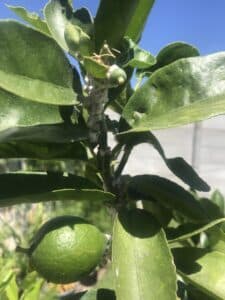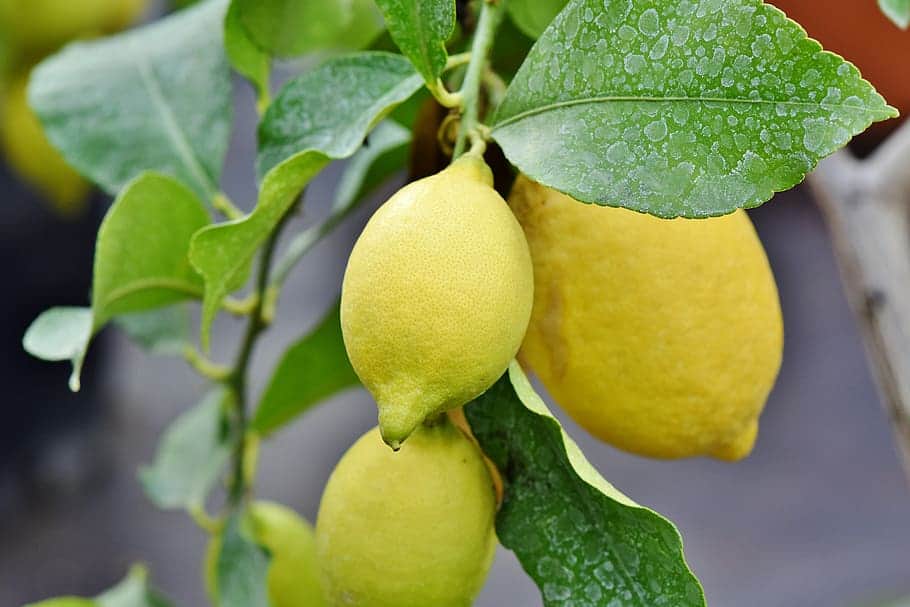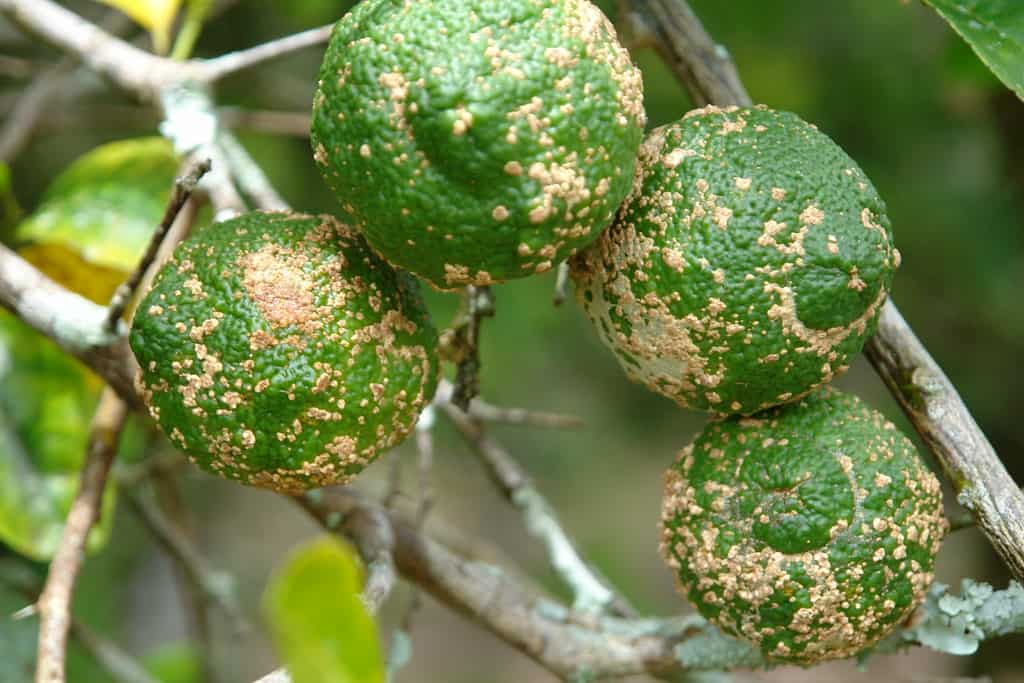I still remember those days, getting up early in the morning and plucking the limes out of the lime tree.
The angry face of my mum when she found out I was the one eating most of the limes from the lime tree potted in my garden still comes to my mind whenever I see a Lime tree.
Stealing the limes without my parents noticing was easy, but as a result, I was the one in charge of caring for the lime tree.

It is fascinating that you can place pot lime trees wherever you like, indoors and outdoors.
Making lime juice daily and keeping the body hydrated can improve your immunity system, promote healthy skin, and prevent heart diseases and kidney stones.
Such a wide range of health benefits and the fruit’s mouth-watering sweet and sour taste would make anyone want to grow the Lime tree at their sweet home.
Table of Contents Show
Common Problems in a Potted Lime Tree
Several problems may occur while growing Lime trees in a pot. Therefore, it is imperative to identify the problems and their reasons to find a solution properly.
If you carefully observe the plant, it is easy to identify the problems.
The common problems found in a potted lime plant are as mentioned below.
1. Rotting of Roots
The plant may slowly decay, leaves will fall, and trees may die when the root rots.
One of the main reasons for root rotting is the overwatering of the plant.
However, direct sunlight may also cause the roots to rot if the roots are unmatured.
2. Vulnerable to Freezing Temperature
Lime trees are most vulnerable to cold climatic conditions among the citrus family.
The leaves and the branches of the potted Lime trees will get damaged when the temperature reaches 30 to 32 degrees Fahrenheit during winter.
However, if the temperature drops below 29°F, the damage will be more serious. Potted Lime trees may even die due to excessive cold.
3. Falling of Leaves
The Leaves will slowly start to wither and fall off, which is a clear indication that something is wrong with the plant.
This is generally caused due to overwatering or underwatering of the Lime tree.
Changes in temperatures and excessively harsh climates can also cause leaf loss.
4. Brown and Yellow Leaves
It is straightforward to spot brown and yellow leaves among the green leaves of the Lime tree. Brown or yellow leaves mean the plant is not getting the proper water it needs.
Also, low humidity and excessive temperature can cause the plant to wither or turn yellow.

5. Susceptible to Pests and Insects
It is a common problem found in several citrus family plants, including the Lime plant.
Several insects and pests such as mealybugs, scale insects, Aphids and Red Spider Mites can cause holes, stickiness on leaves, forming brown circles on branches, and webbing.

The appearance of these signs is a clear indication that your Lime tree has a Pest problem.
6. Fungal Diseases
The fungus can infect any part of a Lime Plant. Therefore, they are likely to cause a lot of damage to the plant.
It can cause various diseases such as Sooty mold, Anthracnose, Botrytis, Armillaria, etc., and eventually may stunt, wither, rot and weaken the plant parts.
12 Tips to Take Care of the Lime Tree in a Pot
Growing and taking care of a lime tree out in the open is easy but growing them in pots and containers takes caring for the plant to the next level.
| Common Problems in Lime Tree | Causes | Solution |
|---|---|---|
| Falling of Leaves | Under watering of the Lime tree or drainage problem | Water the plant properly Make more drainage holes |
| Brown leaves | Over watering Low Temperature | Properly water the plant and try to maintain high temperature |
| Pests and Insects attacks | Carelessness in maintaining the plant and under fertilization | Spray with high jet of water or use non toxic Insecticides. Use insecticidal soaps |
| Rot Roots | Extreme frosty weather | Carry the plant inside or use Frost blankets. |
| Withering or Discoloration of Leaves | Over use of Fertilizers | Use the organic fertilizers in proper amount once every two months |
| Stunted appearence | Fungal Infection | spray the trees with Liquid Copper Fungicide |
| Under growth of branches and trees | Lack of nutrients | Use fertilizers or prune lime tree often |
| Yellow Leaves | Under watering Pests and Insects attack | Water the plant frequently Use organic insecticides and pesticides |
| Fungal Infections | Due to fungus namely Alternaria Brown Spot, Pseudocercospera Fruit and Leaf Spot, Black Spot | Spray the trees with Liquid Copper Fungicide |
Caring for the plant in pots and containers has its benefits and disadvantages.
It can turn out to be a tiresome job if you don’t know the proper tips to be followed.
Some tips you should keep in mind while taking care of Lime trees are mentioned below.
1. Choosing the Right Variety for the Container
Lime trees can grow as high as 15 to 20 feet, so you need dwarf varieties of lime trees to grow in pots and containers.
Pots and containers cannot hold the rootstocks of such tall lime trees.
Lime trees that would not grow taller than 6 to 7 feet would be the best option for pots and containers. Some of the varieties of lime trees to grow on pots and containers are:
- Sweet Limes
- Bearss Limes
- Mexican Limes

2. Best Location for the Potted Lime Tree
It would be best to find a suitable place to keep the Lime plant which is most favorable according to its nature and properties.
In the case of a lime tree, it adores a hot climate and barely even manages to survive in freezing and frosty weather.
If it is a newly planted young lime tree, keep it in indirect sunlight until its roots mature.
3. Proper Watering Schedule for Potted Lime Tree
You need to deep water potted lime trees at least once or twice a week.
The watering schedule depends greatly on how high the temperature gets during summer.
When the temperature gets too hot during summer, the soil will dry faster than usual.
This is why you need to deeply water your lime tree at least once every two days.
However, the potted Lime tree stops growing during the winter season and goes dormant.
Therefore, watering the plant once or twice every two weeks would be a good idea.
Overwatering
Overwatering makes the soil and the compost too wet and dry, which is not favorable for the proper growth of the lime trees.
The leaves of the lime tree may slowly turn yellow and start to curl with every passing day.
This clearly indicates that you are overwatering your Lime tree and should stop overwatering it instantly.
Underwatering
Underwatering makes the soil too dry and hard, which is unfavorable for the growth of plants’ roots.
As a result, the Lime tree looks droopy, crispy, and wilted, directly affecting the plant’s growth and development.
Keep a close watch on these signs; if they appear, it’s time to fetch more water in your Lime tree.
Make sure to deeply water the plant so that the water reaches the roots of the Lime tree easily. And the plant will come back to its original form in no time.
4. Temperature and Humidity
Unbalanced humidity and temperature might cause the Limetree to stress out, which isn’t normal.
The lime tree can achieve its maximum growth and productivity only if the temperature is hot and the air is humid.
The ideal temperature for the Lime tree is about 55 to 90 degrees F.
It will flourish and bear fruits quickly in this climate. But Lime trees cannot tolerate temperatures of 5°F to 10°F.
So it would be better to take the pots or containers of the Lime tree inside if it gets too cold.
Humid air is also essential for the Lime tree to thrive and flourish rapidly.
More than 50% of humidity is required, so if the air gets too dry.
You can place a humidifier nearby your Lime tree, or you can spray the leaves of the Lime tree with water every few days.
5. Soil Type
The lime tree grows best in the lighter and sandy loam soil that is well-drained.
They love to grow in slightly acidic soil but always check the PH value of the soil before potting the lime tree.
The lime tree thrives in soil with a Ph value of 5.5 to 6.5.
The optimum soil temperature for proper root growth of the Lime trees is about 80°F to 90°F during spring and summer and 60 to 70 degrees in the fall and winter seasons.
6. Potting Mix for Lime Tree
The soil mix of the Lime tree gets hard over time and loses its nutrients which are essential for Lime trees.
Whenever this happens, it is best to repot the Lemon tree. Or you need to change at least 50% of the soil with the new potting mix of soil.
You can prepare your own potting mix in your home using animal compost, peat moss, perlite and vermiculite on a ratio of 2-1-1-1.
Some of the best potting mixes to grow your Lime tree is.
- Espoma’s Organic mix
- Kellogg’s Organic palm potting mix
- Citrus Tree Mix
7. Feeding and Fertilization
Lime trees require a hefty amount of nutrients and are thus considered very heavy feeders.
Due to this reason, the nutrients in the potted plants deplete very quickly.
However, it would be highly beneficial to use 2:1:1 NPK ratio fertilizers for your lime plant.
Besides Nitrogen, Phosphorus, and Potassium, the Lime tree also need nutrients such as:
- Calcium
- magnesium
- Boron
- Copper
- Zinc
- Sulfur
You can also buy Nitrogen-rich organic fertilizers for the Lime tree on Amazon.
8. Correct Pot for Lime Tree
Proper drainage holes at the bottom of the pot will ensure the proper outflow of water if the Lime tree gets overwatered.
The drainage system at the bottom of the pot also helps prevent the soil from getting too wet, leading to the withering of leaves from excessive water.
If you encounter that your pot is staying wet for too long, it might be due to a drainage problem.
Therefore, the pot must have at least 2-3 drainage holes at its bottom to maintain the water outflow, or you can also place a layer of stones at the bottom while planting.
9. Regular Pruning
Pruning your lime tree helps the tree blossom more and provides more productivity of fruits every year.
So you need to care for your lime tree, maintain it and prune it more often.
Pruning your Lime tree once or twice a year can improve the lime plant’s health and improve the quality of the fruits.
It would be best if you started pruning from the base of the tree and slowly moved upwards.
Remove new shoots, branches growing downwards and inwards, and weak, broken, or damaged branches from the tree.

10. Repotting Potted Lime Tree
It would be best if you repotted your Lime tree once every 3 to 4 years to obtain quality fruit.
The best time to repot your lime tree is during the spring season before the tree starts active growth.
Repotting your lime tree is essential since it helps to reimburse the lime plant with vital nutrients.
As a result, the roots of the Lime tree will be healthy and accelerates quality fruit production.
So, you should report your Lime tree, which will ultimately enhance its growth and development for generations.
11. Control of Pests and Insects
In Lime trees, Pests and Insects like mealybugs, scale insects, Aphids, and Red Spider Mites are very common.
They can cause a lot of damage to the plant’s stem, leaves, and roots. This is why you must control the pests and insects before the situation gets out of hand.
Here are some of the tips on how to deal with such problems on the Lime trees,
- Use strong jets of water to wash them off from your lime tree
- Spray the plant with Neem oil
- Use insecticidal soaps such as Natria 706230a, safer brand 5118
- Spray non-toxic pesticides.
12. Care from Fungal Diseases
The fungus will likely attack Lime trees and eventually stunt, wither, rot and weaken the plant parts.
To save the Lime tree from Fungal infections, you must take care of them and ensure health.
You need to water the plant with a sufficient amount of water and avoid underwatering the plant.
In addition, fertilize the Lime tree every once in a while for its nourishment and ensure your soil drains properly after watering.

To treat the fungal infection on Lime trees, you can
- Spray the trees with Liquid Copper Fungicide. You must respray the fungicide after 14 days if the fungal infection doesn’t disappear.
- You can also spray with Neem oil.
If the fungal infection on your lime tree gets too worse, there is no cure, and the tree will eventually die.
So, look closely at your Lime tree for any initial signs of fungal infection.
How Long Can a Lime Tree Live in a Pot?
Everything depends on how you care for your lime tree and the plant’s health.
The typical life span of a lime tree is about 50 years, and it can even grow for a decade if you take proper care of it.
However, potted Lime trees have a shorter life span than those rooted in the earth. Therefore, there is no relevant answer to how long Lime trees will live in pots.
If you can save your Lime plant from any significant damage or harm and repot it once every 3 to 4 years, I am sure it will be able to live for longer.
Conclusion
Growing the Lemon tree in a pot while also taking care of it isn’t an easy task like you must have imagined, but it isn’t that hard to make you quit.
Once you have decided about growing and caring for the Lime plant, hold out your thoughts and follow the tips mentioned above.
I’m sure those tips would make caring for your Lemon tree much easier and more convenient.


